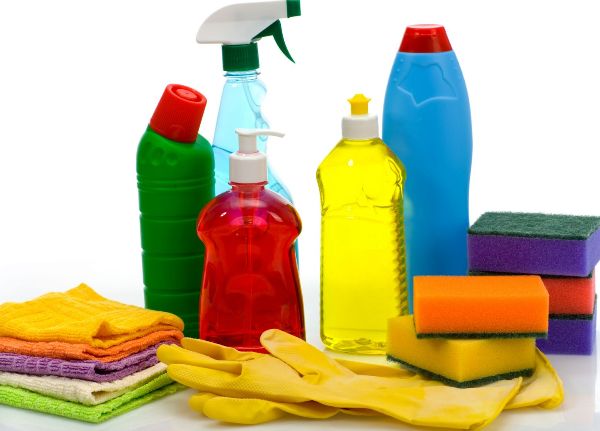

Order a call
 26.12.2018
26.12.2018
In recent years, environmental protection has received great attention in all countries of the world. Household chemicals surround us everywhere. Starting in the morning, going into the bathroom, we brush our teeth with toothpaste, wash our hands, dishes, do laundry, and this continues all day. I became interested in drugs that make our lives “cleaner and more beautiful” and their safety for the human body and the environment. The first synthetic detergent appeared only in 1916. Since then, a range of specialty synthetic detergents (CMCs) have been developed and their production has become an important part of the chemical industry. More and more means were invented. New recipes and formulas were created, but to this day, a purely environmental option has not been identified. In my work, I tried to identify the composition of the safest detergents, as well as their effect on the body. Synthetic detergents (SDCs) are liquid, paste-like and powdery substances, which include: Organic surfactants They have wetting, emulsifying, peptising and foaming properties. The combination of these properties determines their cleaning effect.
INFLUENCE ON THE BODY . Surfactants can enter our body through inhalation, skin contact with detergent, through clothing and dishes that are poorly washed of detergents. So, the main active ingredients are the so-called surfactants, which are extremely active chemical compounds. Surfactants at a certain concentration can cause disruption of the most important biochemical processes, disrupt the function and integrity of the cell, significantly change the intensity of redox reactions, affect the activity of a number of important enzymes, and disrupt protein, carbohydrate and fat metabolism. But if you carefully examine the labels of washing powders on the shelves of our stores, you will notice that our manufacturers do not particularly care about our health, because the concentration of surfactants in them sometimes reaches up to 60%. This is fraught with impaired immunity, the development of allergies, damage to the brain, liver, kidneys, lungs and disruption of the transmission of nerve impulses to the central nervous system. Anionic surfactants are especially aggressive in their actions. You should also avoid products that contain the following substances: Phenols and cresols in household chemicals are used to enhance cleansing properties and also have an antimicrobial effect. These germicidal substances are very caustic and can cause diarrhea, dizziness, loss of consciousness and impaired kidney and liver function. Formaldehyde is used in some detergents to clean stains and surfaces, and formaldehyde is also added as a preservative to various adhesives and paint products. A carcinogen that causes severe irritation to the eyes, throat, skin, respiratory tract and lungs. Phosphates and phosphonates are found in most laundry detergents as a water softener, but can cause allergic skin reactions and respiratory tract damage. Currently, many manufacturers are refusing to introduce phosphate additives into household chemicals, replacing them with more environmentally friendly substances - zeolites and polycarboxylates. Sodium hypochloride - chlorine is very dangerous, it causes diseases of the cardiovascular system, contributes to the occurrence of atherosclerosis, anemia, hypertension, allergic reactions, negatively affects the skin and hair, increases the risk of cancer
During the analysis of the research, the types of the most popular powders were selected: “Myth-automatic”, “TIDE”, “ARIEL”, and from dishwashing detergents “AOS”, “Fairy”. SMS "MIF" (8 points) and "TIDE" (8 points) have the best cleaning ability; they remove all types of contaminants, but the use of these, as well as SMS "ARIEL", requires caution due to the high pH level (9 -10). The highest quality products are those that are highly soluble in water, which means they are transparent. The presence of a-surfactants in washing powder can be indirectly judged by the intensity of foam formation during washing. The higher the foam, the higher the concentration of a-surfactant. The least high-quality dishwashing detergent is Fairy, due to the alkaline pH environment and the presence of phosphate ions, as well as due to poor rinsing of it from dishes and human skin, which can lead to diseases of internal organs.
Thus, the results of the study revealed that detergents may contain substances that can be harmful to human health. It also turned out that cleaning products can be difficult to rinse off. Therefore, it is necessary to limit the use of synthetic substances in everyday life. They can be replaced with natural substances: laundry soap, table vinegar, soda. Be more responsible when choosing detergents and don’t let advertisements deceive you. I hope that as progress progresses, safer detergents will be invented that will be able to completely dissolve in water without forming harmful chemical compounds. With my article, I just want to try to draw people’s attention to this problem, to show that it is quite simple to protect your health - follow simple safety rules when working with detergents and be more careful when choosing a product.
Mukhambetzhanova R.K.
Laboratory assistant for sanitary and hygienic research laboratories
Shu district office
Federal State Enterprise at the PVC "National Center of Expertise"
KOZ of the Ministry of Health of the Republic of Kazakhstan of Zhambyl region